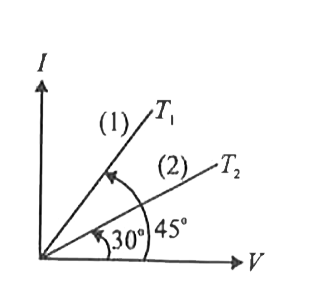Complete Solutions to ONE MARK QUESTIONS AND ANSWERS of chapter CURRENT ELECTRICITY of Class 12 book with complete answers and questions
| Class 12 | PHYSICS |
| Chapter | CURRENT ELECTRICITY |
| SUBHASH PUBLICATION | ONE MARK QUESTIONS AND ANSWERS |
| Number Of Questions | 86 |
| Academic Year | 2023-24 |
What constitutes an electric current?
View SolutionWhat is the net flow of charge at the given cross section of a conductor?
View SolutionDefine electric current.
View SolutionMention the S.I. unit of current.
View SolutionWhat is the direction of conventional current?
View SolutionWhat is the direction of flow of electrons in a conductor?
View SolutionDefine 'drift velocity' of free electrons .
View SolutionDefine relaxation time or mean free time.
View SolutionDefine electron mobility.
View SolutionWhat is the order of relaxation time?
View SolutionMention the SIU of electron mobility.
View SolutionHow does drift velocity depend on electric current?
View SolutionWhat is the average electron thermal velocity at room temperature?
View SolutionWhat is the order of drift velocity of electrons?
View SolutionState Ohm's law.
View SolutionDefine electrical resistance.
View SolutionMention the SIU of electrical resistance.
View SolutionDefine the unit one ohm.
View SolutionHow does the resistance of a conductor depend on its length?
View SolutionHow does electrical resistance depend on the area of cross-section of a conductor?
View SolutionDefine electrical conductance?
View SolutionMention the SI units of electrical conductance?
View SolutionWhat is ohmic device? Give one example.
View SolutionWhat is ohmic device? Give one example.
View SolutionA graph of electric current along the y-axis and potential difference along the x-axis gives a straight line passing through the origin. What does the slope determine?
View SolutionWhat are non ohmic devices?
View SolutionWrite the dimensional formula for electrical resistance?
View SolutionDefine resistivity.
View SolutionMention the SIU of resistivity.
View SolutionWrite the dimensional formula for
resistivity.
View SolutionWhat is meant by electrical conductivity?
View SolutionMention the SI unit of electrical conductivity.
View SolutionWrite the equivalent mathematical form for Ohm's law.
View SolutionExpress the range of resistivity of conductors.
View SolutionWhat is the range of resistivity of semiconductors?
View SolutionWhat is the range of resistivity of insulators?
View SolutionShow variation of resistivity of copper as a function of temperature in a graph.
View SolutionDraw a graph of resistivity of nichrome as a function of absolute temperature.
View SolutionPlot a graph of resistivity of a semiconductor as a function of absolute temperature.
View SolutionThe first three colour bands are Red, Red, Orange. What will be the value of resistance of the resistor?

View SolutionDefine temperature coefficient of resistance of a conductor. Give the expression for temperature coefficient.
View SolutionWhat is meant by 'Critical temperature?
View SolutionWhat are super conductors?
View SolutionA carbon resistor is marked Red, Red, Red, Gold. What is the value of its resistance?
View SolutionCompare `R_(s)` with `R_(p)` for 'n' identical resistors connected in series and parallel combinations.
View SolutionDefine EMF of a cell.
View SolutionWhat amount of energy is derived from a cell by a capacitor, to charge it completely?
View SolutionDefine internal resistance of a cell.
View SolutionDefine one volt of emf
View SolutionWhat happens to the effective resistance when two resistors are connected in series?
View SolutionTwo resistors are connected in parallel. What will happen to its equivalent resistance?
View SolutionDefine effective resistance of a number of resistors connected in a series or parallel combination
View SolutionObtain an expression for equivalent resistance of two resistors connected in parallel.
View SolutionWhat is the reciprocal of resistance called?
View SolutionWhat is the reciprocal of resistivity called?
View SolutionWhy is that the terminal potential difference is always less than the e.m.f. of a cell?
View SolutionWhat is the unit of e.m.f?
View SolutionGive the colour code for `1 0Omegapm10%` tolerance resistor.
View SolutionIn the following graph, say whether `T_(1) gt T_(2)` or not.

View SolutionHow does resistivity depend on number density of electrons?
View SolutionThe length of a conductor is increased two folds. What will happen to the resistivity of the material?
View SolutionWhy are Manganin and Constantan used in making resistance coils?
View SolutionDefine the term current density.
View SolutionWhat is an electrical network?
View SolutionWhat is a node?
View SolutionWhat is a mesh or loop?
View SolutionWhat principle is involved in Kirchhoff's first law?
View SolutionWhat is the significance of Kirchhoff's voltage law?
View SolutionCan Kirchhoff's laws be applied to AC circuits?
View SolutionWhat is the principle of a metre bridge?
View SolutionWrite the balanced condition of Wheatstone's network.
View SolutionWhy are the connections between the resistors in a meter bridge made of thick copper strips ?
View SolutionWhat is generally connected in the right gap of a metre bridge?
View SolutionIf the galvanometer in the Wheatstone's network is removed under the balanced condition, then say whether the network is still balanced or not.
View SolutionIn a balanced Wheatstone's network, galvanometer and cell are interchanged. Will the network be still balanced?
View SolutionIn a balanced Wheatstone's network, the galvanometer resistance is increased by `20Omega`. What happens to the balance of the network?
View SolutionAt what point of a closed circuit, conservation of charge is valid?
View SolutionName the instrument which can measure the emf of a cell and its internal resistance accurately.
View SolutionName the physical quantity which gives the rate of flow of charge per unit area normal to the flow?
View SolutionName any one device that works based on balanced condition of the Wheatstone's bridge or network.
View SolutionWhat will be the resistance of a semiconductor near absolute zero.
View SolutionWhat will be the resistance of a conductor near absolute zero?
View SolutionA resistor draws energy from a battery. Where does this energy come from?
View SolutionWhat are semiconductors?
View SolutionWhat is meant by electrical grounding or earthing?
View SolutionWhat is Super conductivity?
View Solution
ONE MARK QUESTIONS AND ANSWERS questions and complete solutions for chapter CURRENT ELECTRICITY of JEEVITH PUBLICATIONS PHYSICS (KANNADA ENGLISH) of Class 12